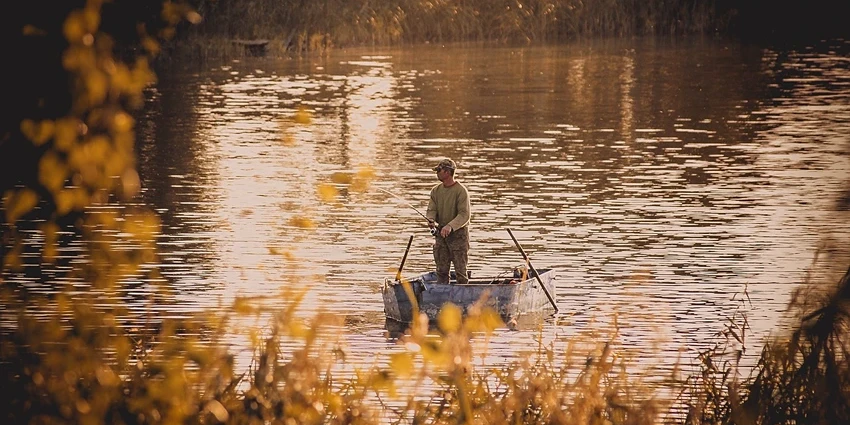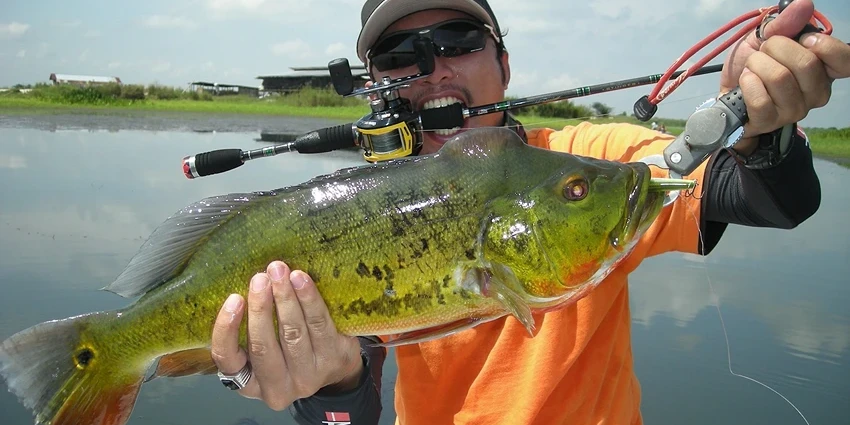All products were chosen independently by our editorial team. This review contains affiliate links and we may receive a commission for purchases made. Please read our affiliates FAQ page to find out more.
Fishing isn’t just a hobby; it’s an adventure that connects you with nature, challenges your skills, and rewards you with unforgettable moments. Whether you’re a seasoned angler or just starting, understanding the nuances of freshwater fishing can elevate your experience. This guide dives into the essentials of targeting specific species in freshwater, offering practical tips and insights to enhance your fishing journey.
Jump to:
Understanding Freshwater Habitats
Lakes and Rivers
Freshwater ecosystems are diverse, ranging from tranquil lakes to flowing rivers. Each habitat presents unique challenges and opportunities for anglers. Understanding these environments is key to locating and catching your desired species.
Seasonal Changes and Fish Behavior
Fish behavior changes with the seasons. Spring brings spawning activities, summer sees fish seeking cooler depths, fall triggers active feeding, and winter slows down their metabolism. Aligning your fishing strategies with these patterns increases your chances of a great catch.
Equipment Essentials for Freshwater Fishing

Rods, Reels, and Line Types
Selecting the right equipment is a balancing act. A versatile setup includes a medium-power, fast-action rod around 6’6” in length, paired with a size 35 reel. This combo is suitable for various species and techniques.
Importance of Choosing the Right Bait and Lures
Bait and lure selection can make or break your fishing trip. Live baits like worms and minnows are great for beginners, while artificial lures like spinnerbaits and jigs appeal to more experienced anglers.
Targeting Specific Freshwater Species
Bass Fishing Techniques
Bass are attracted to structures like weed beds and submerged objects. Using lures that mimic their natural prey, such as crankbaits and soft plastics, can be highly effective.
Trout Fishing Strategies
Trout prefer cooler, oxygen-rich waters. Fly fishing with nymphs or streamers is a popular method, but spinning gear with small spinners or spoons also works well.
Tips for Catching Walleye
Walleye are often found in deeper waters. Jigging with live bait or using deep-diving crankbaits can yield good results, especially during dawn and dusk.
Catfish Tactics
Catfish are bottom dwellers, so baits like chicken liver, nightcrawlers, or stink baits, fished on the bottom or near structures, are effective.
Advanced Techniques for Experienced Anglers
Fly Fishing Basics
Fly fishing is an art form that requires practice. It’s effective for trout and bass, using hand-tied flies that mimic insects or small fish.
Ice Fishing Tips
Ice fishing is a unique winter activity. Using small jigs or live bait in drilled holes over known fish habitats can be surprisingly productive.
Table: Freshwater Fishing Gear Essentials
| Gear Type | Description | Best Use |
| Spinning Rod | 6’6”, Medium Power, Fast Action | Versatile, suitable for bass, trout, and walleye |
| Reel | Size 35, 4-7 Ball Bearings | Smooth operation, good for various fishing styles |
| Line | 6-12 lbs Monofilament | Ideal for beginners, works well for most freshwater fish |
| Baits | Worms, Minnows | Effective for most species, especially for beginners |
| Lures | Spinnerbaits, Jigs, Crankbaits | Great for bass, trout, and active fishing techniques |
Register for our latest in-depth reviews and product round-ups from the experts
Enter your email address below to receive our twice monthly reviews emails.
By entering your details, you are agreeing to our terms and conditions and privacy policy. You can unsubscribe at any time.
Reading Water and Weather Conditions
Understanding Water Currents
Navigating the currents is crucial for locating fish. In rivers, fish often stay in slower currents to conserve energy. Look for eddies and areas where the current breaks.
Weather Impact on Fish Behavior
Fish are sensitive to weather changes. Barometric pressure, temperature, and weather fronts can all influence fish activity. For example, fish tend to feed more actively before a storm.
Table: Weather Conditions and Fish Behavior
| Weather Condition | Fish Behavior | Best Fishing Strategy |
| High Pressure | Less active | Slow, deep fishing techniques |
| Low Pressure | More active | Active lures and baits |
| Warm Front | Increased metabolism | Surface and shallow water fishing |
| Cold Front | Slower metabolism | Deep water fishing with live bait |
Conservation and Ethical Fishing Practices
Catch and Release Techniques
Proper catch and release ensure fish survival and ecosystem balance. Handle fish with wet hands, use barbless hooks, and keep the fish in water as much as possible.
Local Regulations and Species Preservation
Always adhere to local fishing regulations, including size and bag limits. These rules are in place to maintain healthy fish populations.
Preparing for a Fishing Trip
Essential Gear Checklist
- Rod and reel
- Tackle box with various baits and lures
- Fishing license
- Sun protection (hat, sunglasses, sunscreen)
- First aid kit
Safety and Navigation Tips
- Check weather forecasts and water conditions.
- Inform someone about your fishing location and expected return time.
- Wear a life jacket when fishing from a boat.
Frequently Asked Questions
Early morning and late evening are typically the best times, as fish are more active during cooler temperatures.
Research the preferred diet of the target species. For example, bass often go for artificial lures, while catfish prefer stink baits or live bait.
Fishing before a rain can be productive as fish are more active. After heavy rain, water conditions might be murky, making fishing more challenging.
Look for signs of fish activity, such as jumping fish or birds feeding on the water. Structures like logs, rocks, and vegetation also attract fish.
Fish are sensitive to pressure changes. A dropping barometer often signals more active feeding, while a rising barometer can make fish less active.







